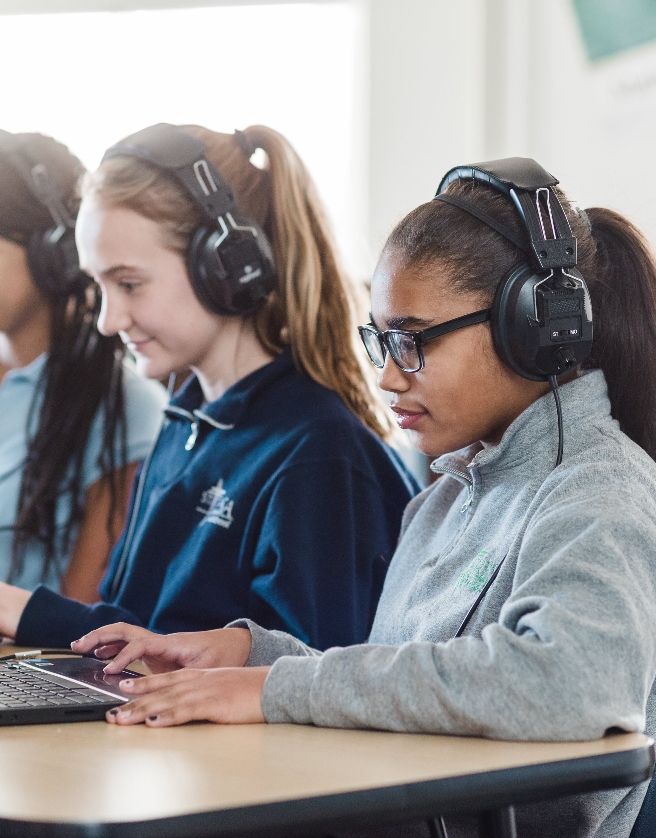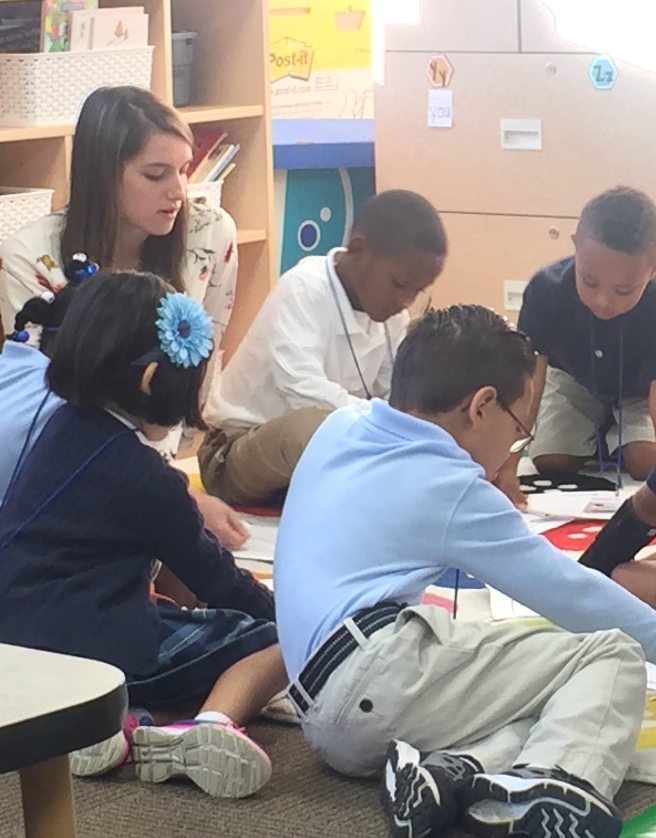Routines + Procedures
Routines, systems, and procedures form the backbone of schools and classrooms. These habits help maximize learning time, create safe, calm, and inviting spaces, and help students build independence. In a blended learning classroom, specific routines and procedures are implemented to support the model that may differ from that of a traditional classroom. These include a specific classroom layout, procedures for moving in-between spaces, and systems to cultivate student independence. Having thoughtful, preplanned routines, systems and procedures create a strong foundation for an effective instructional environment. When these are well established, teachers can focus on delivering strong instruction and data analysis to meet all student’s needs.
Classroom Setup
Creating a classroom environment conducive for blended learning is critical for students to succeed. Each student needs their own space in order to feel safe and successful. Otherwise, even with the best of intentions and procedures, incorrect student behavior and lack of focus can inhibit learning. For blended learning to be successful, a classroom should have a designated space for small group instruction and a separate space for computer stations. These spaces should be on opposite sides of the classroom from each other so that students can focus on their given task without the distraction of a different activity. Additionally, there should be clear pathways for students to move from one area to another. This will prevent students from getting hurt, allow for smooth and efficient transitions between stations, and ensure that laptops and other learning materials do not get dropped or knocked to the ground.
Computer stations are a critical element of a blended learning classroom setup. This means that there will be student desks and computer stations; students should not work on computers at their desks if possible. Stations should be pushed against a wall so that each student’s back faces the teacher. This allows the teacher to see each computer screen to ensure students are on task. In addition to computer stations, each classroom should have a small group learning space. Keeping the small group area distanced from the computer stations is key so that students in both groups stay focused and have less chance of being distracted.

Resources for Educators
Key Elements of Classroom Setup
A description of the unique physical spaces needed in a blended learning classroom.
Computer Assignment Template
Rotations
Efficient procedures are essential to maximizing instructional time in any classroom. In a blended learning classroom, efficient procedures are even more critical because students move between learning activities more frequently.
Rotations are the transitions between instructional spaces within the classroom. Specifically, this transition is one where students move in a specified and practiced direction around the room on a designated path to get from point A to point B. Efficient rotations maximize instructional minutes, and also minimize opportunities for student misbehavior and distraction, by keeping students engaged as they move between activities.
Imagine that the school year has 180 days. Each day, students rotate 3 times in math class in the morning, and 3 times in reading class in the afternoon [3 times = once to start and form two groups, once to twice groups, once to end and return to the whole group]. If each rotation takes 3 minutes to complete, how much time (in hours) does this class spend completing rotations during the year?
54 hours

Resources for Educators
Rotations Overview
An outline of the key elements that support successful blended learning classroom rotations.
Rotations PD
A professional development session introducing best practices for blended learning rotations.
Includes: PowerPoint, facilitator guide, and participant handout.
Rotations Videos
Videos of classroom rotations at different grade levels.
Systems that Support Blended Learning
Blended learning classrooms at their best are finely tuned machines, albeit with A LOT of moving parts. Students are in multiple places around the classroom for various periods of time, new resources and learning tools are being used, numerous voices must be heard all without interrupting each student and group of students learning pace and concentration.
After setting up the classroom and determining how rotations should look, blended learning educators new and old should consider how the rest of the systems in their classrooms support each aspect of blended learning. These systems include how teachers schedule and break up learning blocks throughout the day, how they practice different procedures with students, how student behavior is incentivized and invested in, the various types of student groups that will be created, and so on.
Many of these systems will be different than in a traditional classroom, and the resources found here are excellent tools to get started building these systems, or evaluating existing ones.

Resources for Educators
Scheduling Blended Learning
A planning guide for blended learning classroom schedules with examples.
Suggested Classroom Systems
A list of classroom systems that support an effective blended learning classroom environment.
Explicit Expectations PD
A professional development session on setting clear expectations in the classroom.
Includes: PowerPoint, facilitator guide, and participant handout.
Rotations Video Examples
Kindergarten
Rotation Example
1st Grade
Rotation Example
3rd Grade
Rotation Example
5th Grade
Rotation Example
7th Grade
Rotation Example
Systems that Support Blended Learning Video Examples
Kindergarten
Rotation Example
1st Grade
Rotation Example
2nd Grade
Rotation Example
3rd Grade
Rotation Example
4th Grade
Rotation Example
5th Grade
Rotation Example
6th Grade
Rotation Example
7th Grade
Rotation Example
8th Grade
Rotation Example
Classroom Set-Up Video Examples
Kindergarten
Rotation Example
1st Grade
Rotation Example
2nd Grade
Rotation Example
3rd Grade
Rotation Example
4th Grade
Rotation Example
5th Grade
Rotation Example
6th Grade
Rotation Example
7th Grade
Rotation Example
8th Grade
Rotation Example
